In my exuberance in sharing my recent experiences in Chicago with the wonderful people behind the Sun Ra exhibit (Hyde Park Art Center), I almost forgot to mention that the December issue of Downbeat magazine hit the street with a cover story about, guess who? Sun Ra, of course. Specifically, it is an excellent article written by John Corbett, about Sun Ra’s Chicago life, the founding of El Saturn Records with my dad, Alton Abraham. Of some interest is a short remembrance of dad from yours truly. But of greater interest is the story itself, of men of vision, conviction, and determination to express life their way.
This article is also a piece of my own veiled history, for since my mother and dad parted company early in my life, it chronicles the major focus and thrust the life he lived in parallel to our own during my childhood, which included occasional intersections. Yet, the legacy of music, thought, and philosophy that they embraced, which was foreign to the bulk of society in that day, is just now beginning to dawn in meaning to some of us today.
One perception that I would clarify from the article is the nature of dad’s business relationship with Sonny. In his article, John refers to the El Saturn label as one of the first musician-owned record companies. He finishes the sentence off by saying that El Saturn was co-owned by Alton Abraham, his business manager and fellow mystic. I would have re-written this sentence to say that El Saturn was one of the first record companies that included musician co-ownership. I was only four years of age when this happened, and have not seen the records from the business filings. However, from my sense of things after growing up, and from people that I’ve spoken to who had dealings with the group, it was clear that Alton ran the business, and Ra ran the music.
Alton made the deals and made the decisions about packaging, cover art, bookings, pricing and collecting money. He paid the bills. When the band needed money, they called or wired Alton. He had the authority to make decisions for the business. He was assisted by James Bryant, a jovial spirit and true friend, and dedicated believer. It was James who introduced dad to Sonny Blount.
I knew James for forty-some years. Whenever I saw dad, James was typically somewhere nearby, or passed through to report on some matter of importance. After dad’s passing in 1999, James and I became cohorts, kindreds who wanted public interest in Sun Ra’s music to continue growing. I endeavored to have James be recognized for his presence and involvement with the genesis of the Sun Ra legacy; an approach that wasn’t well-received, and hadn’t been accomplished by the time he passed over, in late 2005.
He was one of the original signatories, along with Sun Ra, dad, and several others, to Ihnfinity, Inc., a not-for-profit corporation that they eventually created to oversee the thrust, and be true to the spirit of their work.
James told me of trips that Alton sent him on to different parts of the country on behalf of dad, going to California to ABC Impulse! records, or many trips to New York or Philadelphia after the group moved. He handled many of the essential details that go into making any enterprise grow. While dad may have overseen the task of stuffing the album jackets, I suspect that James is the person that really got the job done, and with a smile.
The spirit of their work, and the spirit in which it appears that they went about doing it, is exemplified in the thoughts presented below, by Natel Juni, for the album, When Angels Speak of Love.
While Sun Ra is credited with avant-gard, or free jazz, this philosophy could comfortably be viewed as New Thought, of the vein of Ernest Holmes (1887-1960), Emmet Fox (1886-1951), Joseph Murphy (1898-1981) or Emanuel Swedenborg (1688-1772). Yet, while his perspective fits comfortably within this particular ideological matrix, he introduces the concept of space and space travel in a three, as well as a four-dimensional context.
There is more to say and share, but it’s time for me to get back to earth, and this dimension.
Even before I made the trip back to Chicago for the Symposium, John Corbett and I came to a place where we knew we’d be connected from here on out, although we (or perhaps I) didn’t know how.
What I know now is exciting, but sharing will have to wait until another time.


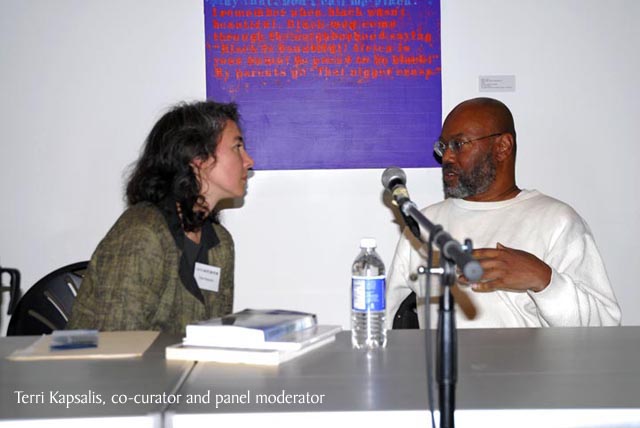

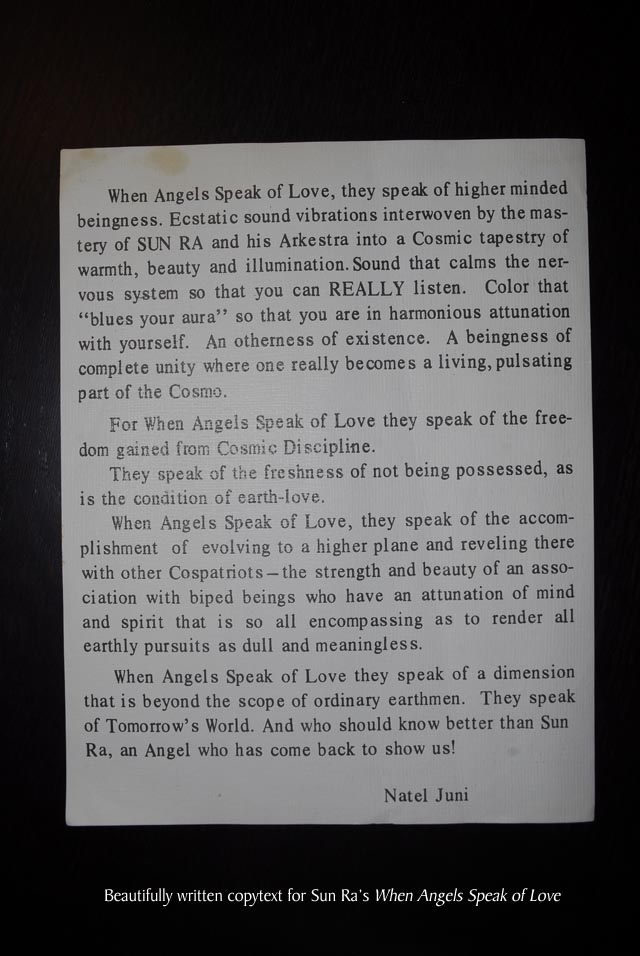
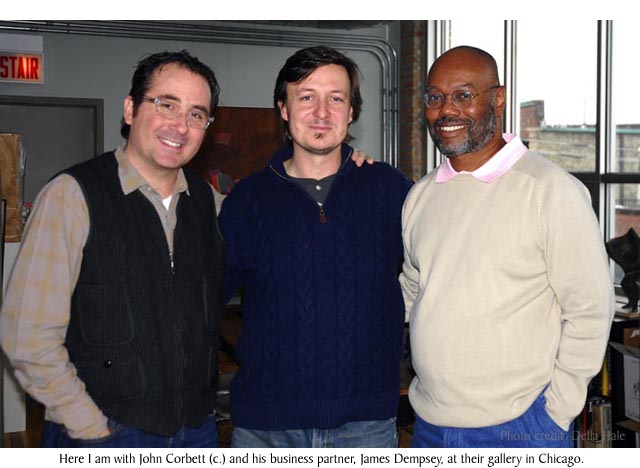
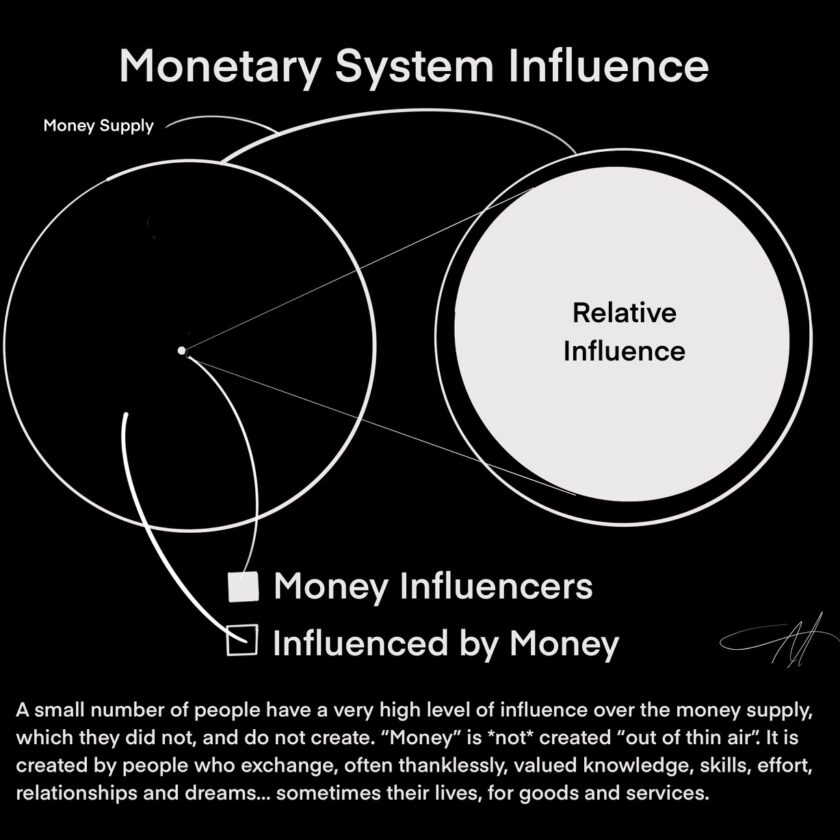
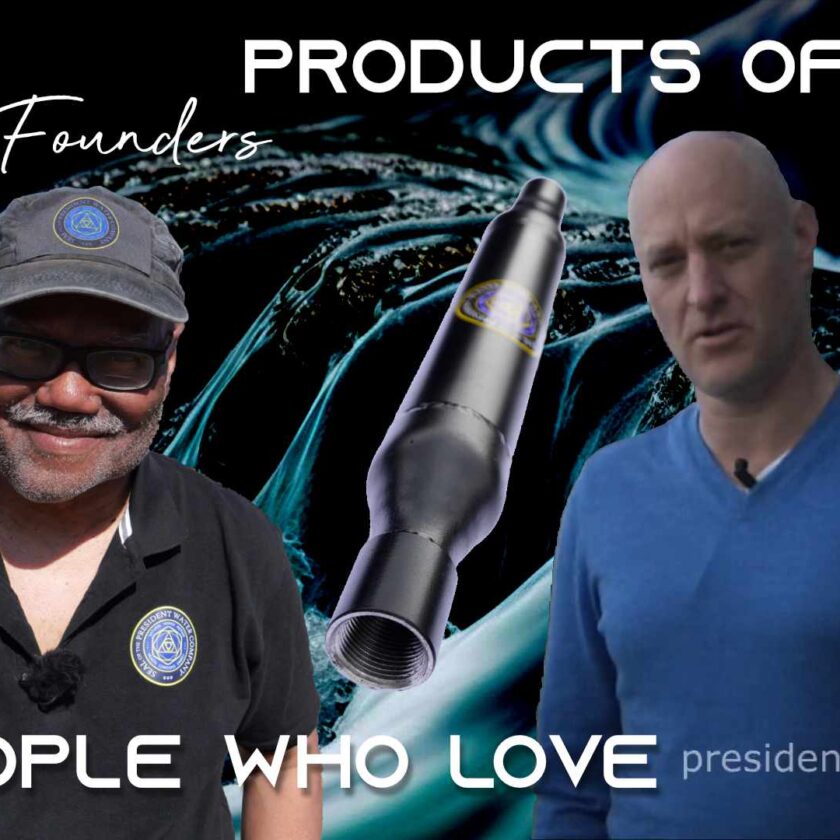

I’m really enjoying the design and layout of your blog. It’s a very easy
on the eyes which makes it much more enjoyable for me to come here
and visit more often. Did you hire out a designer to create your theme?
Excellent work!
Tгès bon post, pérennisez dans cette voie
Thanks so much Adam for this Article,and for participating in the exhibit,and contributing in a major way,and letting me know a little about your Dad. May Alton’s vision and work live on,perpetually!(And yours also)
Many thanks Ray. I’ve got some more video to share from my time there. Our friend Brad gifted me with a picture of dad and James together, which I’ll soon append to this entry, or make the centerpiece of another.
Adam,
I work at the Hyde Park Art Center, and I have to tell you that learning about Sun Ra, his music, and his philosophy has truly been an exciting and enlightening experience. The album covers and broadsheets in our exhibition have been amazingly popular, and the symposium was an equally amazing event. Your rememberances of your father, James Bryant, and Sun Ra in your blog are especially heartfelt and I’m glad you shared them. Take a look at our website (www.hydeparkart.org/4833/)for links to video from the symposium weekend. Hope you enjoy them!
Ray Yang
Hyde Park Art Center